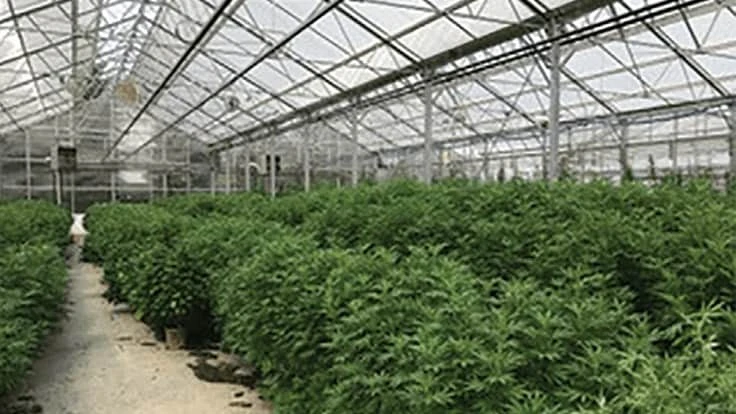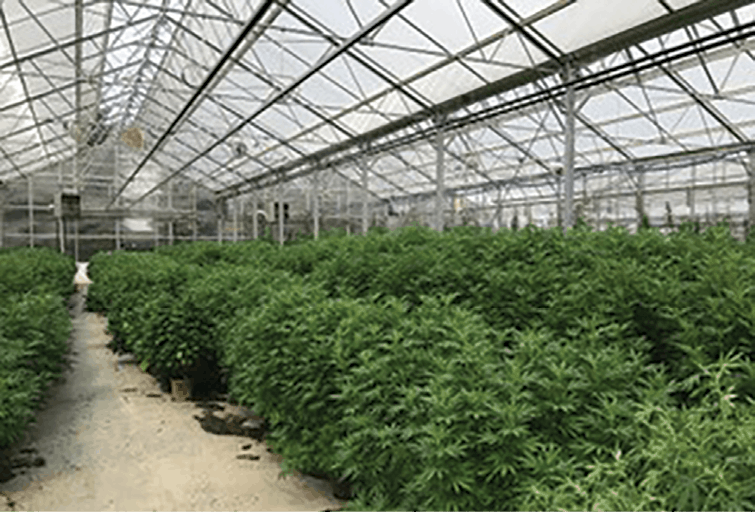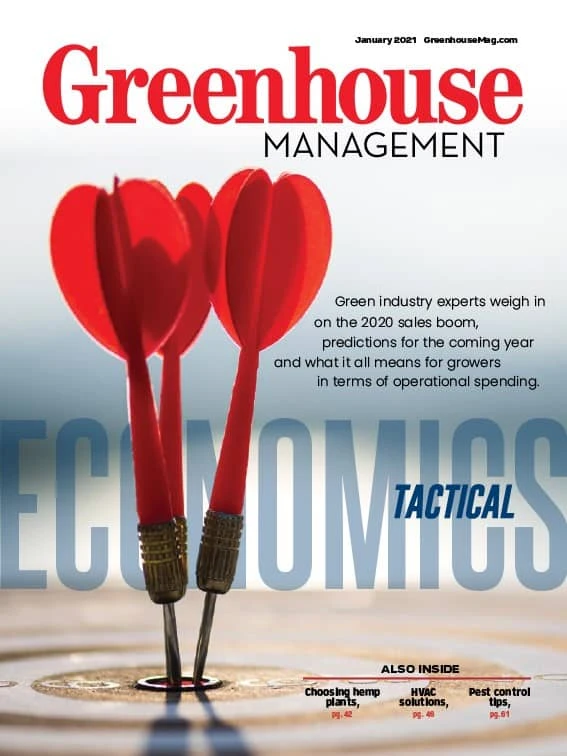

Greenhouse hemp producers find themselves grappling with one of the most important decisions for any commercial cannabis operation: selecting the proper strains, or cultivars to produce each season.
Unlike ornamental production – where the thousands of certified varieties of annuals and perennials have been researched and trialed and genetically selected by professional breeders for decades now — commercial hemp genetics are still underdeveloped compared to the major agronomic crops.
With that in mind, there are a multitude of factors to consider when making your hemp genetics purchasing decisions.
Production pioneer
One of the first commercial hemp licensees to legally produce a crop in the Land of 10,000 Lakes, Hemp Service of Minnesota CEO Paul Frank has monitored developments on the genetics side of the hemp industry since its inception. His state-wide cultivation network produced six strains of hemp during the 2020 season, most of which was for smokable hemp flower or extracted products.
The group also propagated six different cultivars of hemp clones to certified operations across the country.
“One of the most important aspects is knowing that the strains we grow are optimized for our geography,” Frank says. “If they were bred and worked well in places like Washington, Oregon and Montana, then they should work in our greenhouses and fields, too.”
Frank advocates growers devote ample attention to each offering’s Certificates of Analysis (CoAs).
Specifically, he advises fellow growers to check dates. Seed lot testing dates within 12 months (since seed germination rates tend to degrade after a year in storage) are considered current, he says.
“And you have to also be certain that you trust the data — where the variety was developed, and what lab did the testing,” Frank says.
Once a buyer has zeroed in on a genetics provider that is trustworthy, the process of further evaluating that growers’ genetic offerings begins. Now, strain characteristics like cannabinoid and terpene levels are factored into the selection process.
“Lot purity and germination rate are also very important, as well as making sure you understand the varieties’ parent genetics (which two strains were bred together, or crossed, to make each cultivar),” Frank says.

Engage local experts
Growing hemp in a 12.5-acre commercial greenhouse alongside blocks of pesticide-free leafy greens and lettuce in upstate New York’s Niagara County, Wheatfield Farms owner-operator Paal Elfstrom made the move to incorporate hemp crops into the greenhouse back in 2017.
The former pharmaceutical industry rep says he has learned a lot about what makes a good commercial greenhouse hemp variety.
“Genetic stability, plant uniformity and vigor, these are typical plant characteristics that any greenhouse grower, whether it’s for perennials or cannabis, is seeking out,” Elfstrom says. “We also look for the proper flower to leaf ratios, since we’re trying to grow the highest amounts of cannabinoids.”
Like his counterpart up in Minnesota, Elfstrom stresses the importance of going over CoA documents with a fine-toothed comb. “We’re really focusing on the terpene and cannabinoid [levels], it’s kind of what I like to call a ‘CoA-focused selection process,’” he says. “I compare it to how a controlled environment strawberry grower is looking for the right combination of flavor and sugar content."
Wheatfield Farms has found value in partnering with Cornell University, where Dr. Larry Smart and his team of horticulture researchers are turning out research findings on all aspects of commercial hemp production in the Empire State.
“I would encourage anyone interested in growing hemp reach out to the local cooperative system and the Land Grant researchers in your area,” Elfstrom says.
Land Grant weighs in
Speaking of academia, Nicholas Kaczmar is a research support specialist within the Horticulture Department at Cornell University. Kaczmar and his team study various commercial hemp production systems.
“Commercial growers are looking for robust resistance to fungal pathogens like powdery mildew and botrytis, mostly because there just aren’t many products labeled for use in hemp or cannabis,” Kaczmar says. “It also helps minimize spray applications throughout the year.”
Otherwise, Kaczmar advises growers to factor in how they intend to grow the crop and which market they are hoping to produce for during the genetic selection process.
“If you’re growing smokable flower you will want a variety with larger main flowers and colas, which are more marketable than the smaller, airy ones that are ideal for extraction,” he says. “And some of these early maturing, auto flowering varieties are really interesting because you can have a harvest every two or three weeks.”
Kaczmar says growers should also ensure any genetics they invest in are total THC-compliant. “Make sure your THC levels are low enough that you’re not always worried about the hemp going hot (over 0.3% THC content),” he says. “It’s looking like the new USDA regulations will be based on total THC compliance, so I’d recommend looking at total THC content (vs. delta9 THC levels), especially if you’re looking for lines of production that you can move forward with beyond this season.”
And, last but certainly not least, is hunting out unique phenotypes in your hemp genetics, Kaczmar says.
“Unique colors like purple and pinks are really popular with consumers right now,” he says, noting the relative infancy that hemp and cannabis breeding programs are currently in.
“There’s still a lot of work to be done, no doubt.”

Explore the January 2021 Issue
Check out more from this issue and find your next story to read.
Latest from Greenhouse Management
- Anthura acquires Bromelia assets from Corn. Bak in Netherlands
- Top 10 stories for National Poinsettia Day
- Langendoen Mechanical hosts open house to showcase new greenhouse build
- Conor Foy joins EHR's national sales team
- Pantone announces its 2026 Color of the Year
- Syngenta granted federal registration for Trefinti nematicide/fungicide in ornamental market
- A legacy of influence
- HILA 2025 video highlights: John Gaydos of Proven Winners





